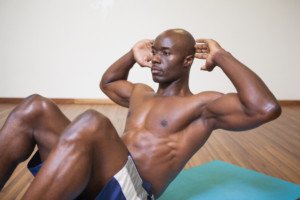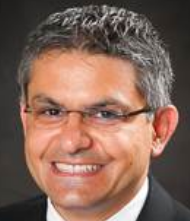
Ever see those surgical hair restoration infomercials and wonder if the donor follicles can keep up with the hair loss follicles?
In surgical hair restoration, follicles that are not genetically programmed to eventually stop producing are “grafted” onto the sites that have become bald.
If you’ve seen any hair loss infomercials involving surgical solutions, perhaps you’ve wondered what I’ve wondered.
In male pattern baldness, the first areas to “go bald” are the top and top/back of the head.
When this pattern of baldness progresses enough, the man is left with a horseshoe pattern of hair.
In extreme cases, this remaining hair is a thin band encircling the lower portion of his head, just above his ears, revealing significant amount of scalp.
The infomercials show the donor site as the section of hair that’s below the balding area. But won’t this area eventually thin out too?
As follicles from this area are grafted onto the top portion of the patient’s head, seems that if this is done enough, this donor area will thin out.
And because this donor area will thin out if it’s harvested enough, and as the male pattern baldness progresses over many years, won’t the patient be left with hair pretty much only on the top of his head?
“Realistic short and long term results should be discussed, as the balding process is progressive and final results can be unpredictable,” says Allen Gabriel, MD, board certified plastic surgeon with PeaceHealth Medical Group Plastic Surgery in Vancouver, WA.
“Over time the transplanted area may become ‘isolated’ and therefore multiple procedures may be necessary over one’s lifetime to achieve natural results.”
Dr. Gabriel continues that “small areas of donor sites can be taken for hair transplant without any loss of noticeable hair with newer techniques.”
The back of the head is a common donor site (since male pattern baldness begins more towards the top of the head).
Taking follicles from this site will not result in noticeable hair loss, says Dr. Gabriel.
“Even if a larger graft is taken and divided into mini-grafts (not the preferred way), the skin and scalp can stretch and expand, and loss of hair will not be noticed as long as the hair is long enough to cover (or drape over) the donor scar.
“With newer techniques and technologies (i.e., follicular unit extraction), the surgeon can retrieve grafts three to five times from the same area,” explains Dr. Gabriel.
“It’s like harvesting blades of grass from the lawn. If we disperse the harvesting, it will not be noticeable.”
Will grafts grow if they are transplanted in an area that never grew hair?
For instance, suppose a person always had a receding hairline, or, to put it another way, prominent temples with an innately, naturally receding hairline.
If the skin here is healthy (non-scarred and no prior history of radiation), and especially if the patient is a nonsmoker, then this recipient site will be “welcoming to the graft,” says Dr. Gabriel.
He emphasizes that medical problems such as diabetes, vascular and thyroid disease will interfere with results and should be controlled prior to the procedure. Smoking cessation is also critical for better results.
“One can graft near the temple or graft on the forehead to lower the hairline, even though hair never grew there.”
 Dr. Gabriel is adept at addressing a wide range of concerns, from breast reconstruction after mastectomy and the treatment of congenital anomalies, to complex facial and breast surgeries performed solely for cosmetic improvement.
Dr. Gabriel is adept at addressing a wide range of concerns, from breast reconstruction after mastectomy and the treatment of congenital anomalies, to complex facial and breast surgeries performed solely for cosmetic improvement.
 Lorra Garrick has been covering medical, fitness and cybersecurity topics for many years, having written thousands of articles for print magazines and websites, including as a ghostwriter. She’s also a former ACE-certified personal trainer.
Lorra Garrick has been covering medical, fitness and cybersecurity topics for many years, having written thousands of articles for print magazines and websites, including as a ghostwriter. She’s also a former ACE-certified personal trainer.


























